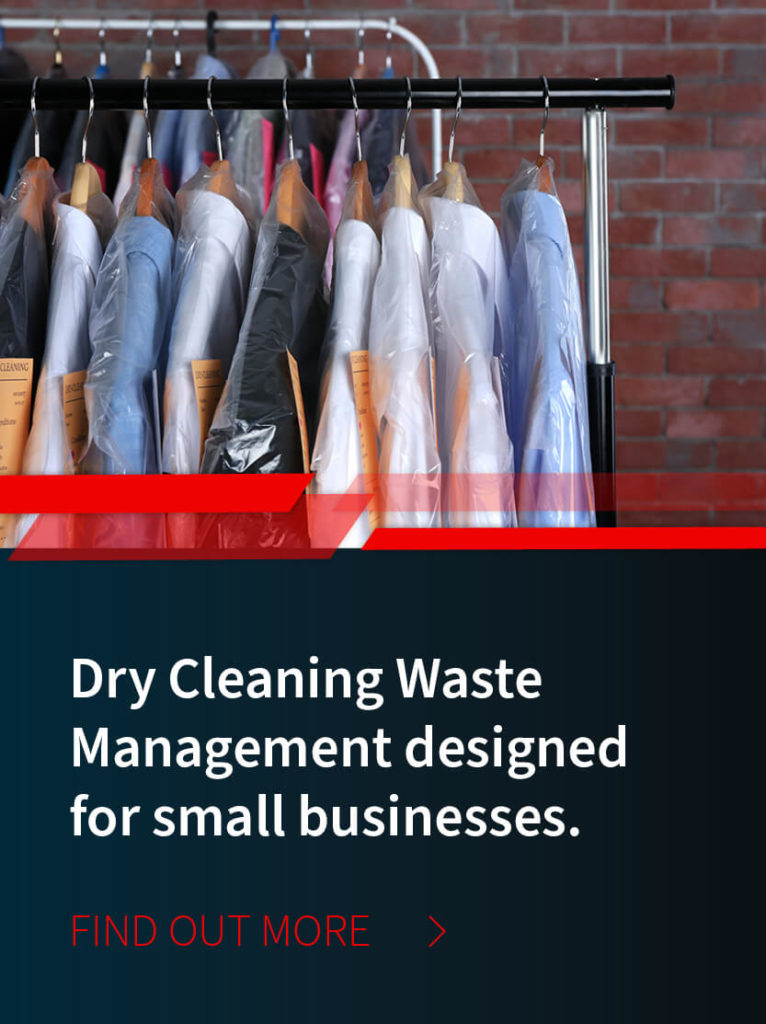
Training and Permits
In order to legally handle hazardous materials, which a dry cleaning company does generate, the waste management employees must have their hazmat licenses. The drivers are also supposed to be certified as hazmat transporters.
It's important to note this is different than commodity transporters. For example, a commodity transporter can legally transport hazardous paint. However, once that paint is used or deemed waste, you need to be a hazmat transporter to legally move it. It's a somewhat confusing distinction, but it's important to make sure your waste management drivers are hazmat transporters rather than commodity transporters.
Additionally, drivers need to have an eight-hour hazmat refresher course every year. Upon completion of this refresher course, the driver will receive an updated certificate to acknowledge completion of that course.
If you're unsure about the credibility of a waste management company, ask about these trainings to make sure their employees are held to that standard. If desired, you could even ask to see those certificates to ensure the training was done.
Insurance
One important insurance-related fact that some dry cleaners overlook is that their waste management companies need insurance not only for their states but all states the hazardous material is going to be transported through.
A reputable hazardous materials management company should also have several types of insurance:
- General liability
- Pollution liability insurance (in case of spills or accidents)
- Automotive insurance on all trucks or vehicles
- Workers' compensation
Look for companies that carry at least $5 million of insurance. Some smaller companies only carry $1 million because that's the minimum required. However, if you go with a company that's only insured to the minimum and there is an accident, once that limited liability insurance is used, you—the generator of the waste—are then liable for all expenses above and beyond what the insurance covered.
In this way, you might save a few hundred dollars to ship with a smaller company, but insurance is a huge consideration when dealing with hazardous waste. Should the unexpected happen, you could end up paying tremendous sums of money if your waste management company's insurance is inadequate.
Look for Experience
As with any generated hazardous waste, you are ultimately responsible for that waste from the cradle to the grave. At every stage in that waste's journey from your facility to the landfill, you are responsible should something go wrong.
Even when the waste is shipped away from your dry cleaning business—on its way to a treatment facility or even in the treatment facility—you are still liable.
This is why managing the waste properly and partnering with a reputable, experienced waste management company are critically important. If your waste managers don't abide by hazardous waste regulations or bring the waste to a facility that can't properly or legally treat it, you're setting your dry cleaning business up to be hit with hefty fines.
Follow Up with Paperwork
Because you are still liable for that waste, don't just assume it arrived safely at the treatment facility. A hazardous material manifest should accompany the drums when shipped, and the treatment facility should send back a copy of that paperwork to verify the drums were safely received. If you don't receive that paperwork within thirty-five days, you should call to follow up. Whether the manifest got lost in the mail or the facility never sent it, you need to do everything possible to keep track of where your waste is—even when it's offsite.
For more information about what permitting, training, and insurance are required to handle, transport, and properly dispose of dry cleaning waste, please contact a representative of MCF Environmental Services, a full service hazardous waste management company.








